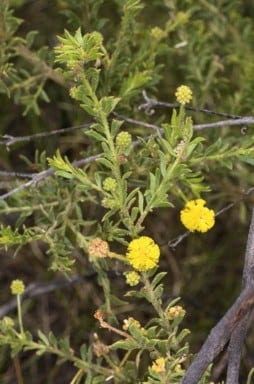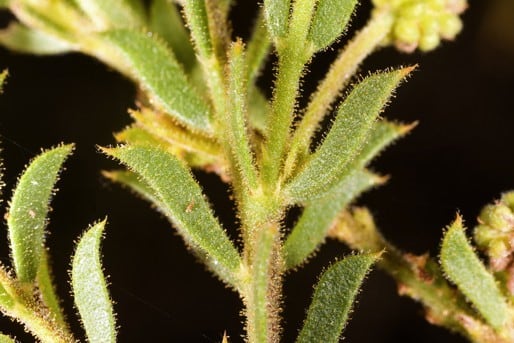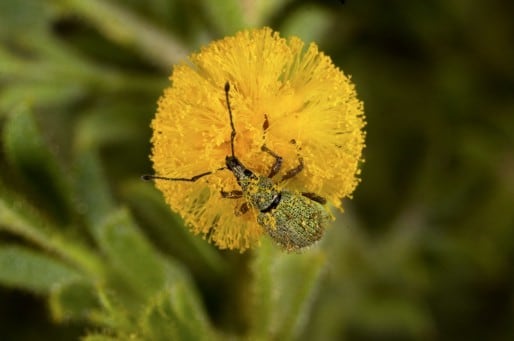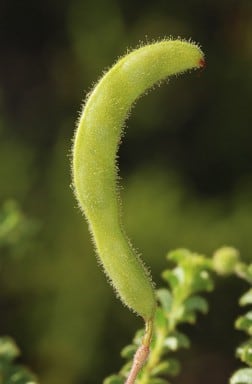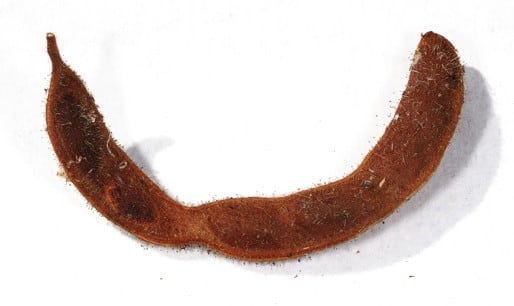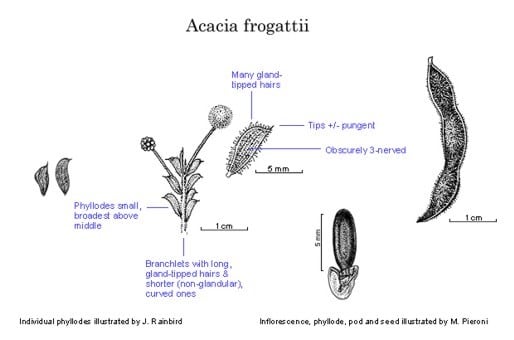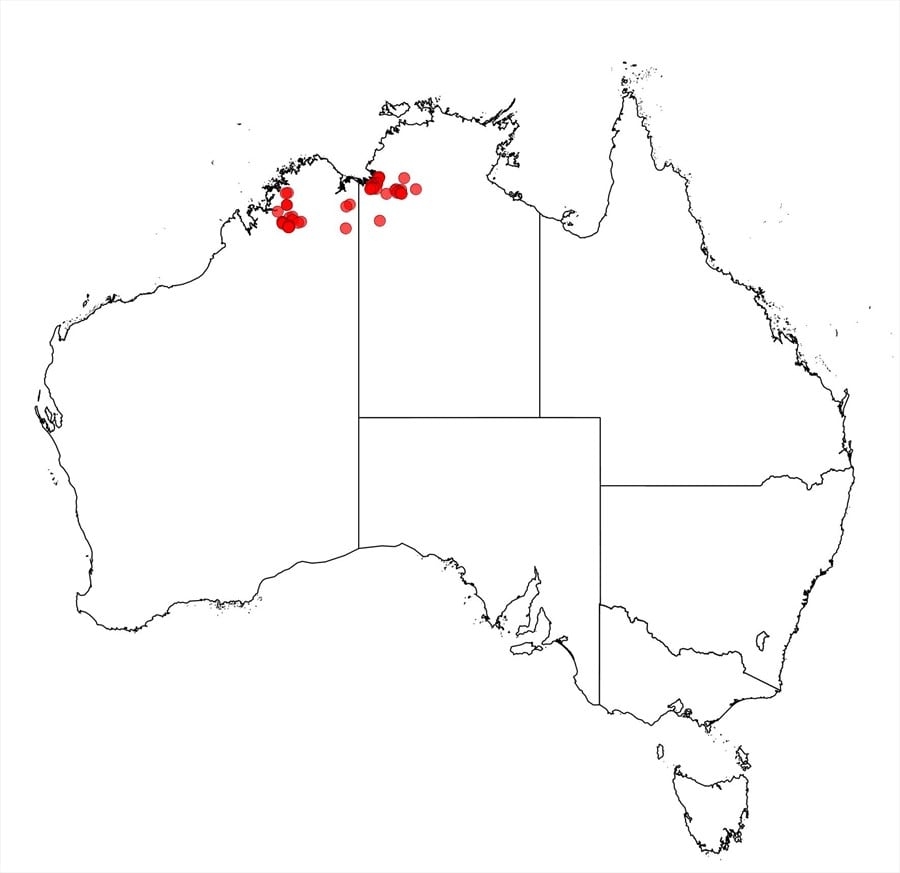Acacia froggattii Maiden
WATTLE
Acacias of Australia
Family
Fabaceae
Distribution
Occurs in the Artesian Ra., Isdell Ra. and Phillips Ra. areas in the Kimberleys, W.A. and in the Fitzroy Ra. area, N.T.
Description
Shrub 0.4–1 m high, much-branched, spreading. Branchlets terete, commonly with longer straight gland-tipped hairs and shorter antrorsely curved or patent hairs. Stipules persistent, ±acicular, free, 1–1.5 mm long, sublateral. Phyllodes crowded, ascending, inequilaterally cuneate, obovate, oblanceolate or elliptic, ±curved, 3.5–7 mm long, 1.2–2 (–2.5) mm wide, l: w = (2–)3–4, straight to recurved at apex which is ±pungent by a short slender mucro, coriaceous, puberulous (many hairs gland-tipped), obscurely 3–5-nerved; nerves sometimes superficially absent; gland inconspicuous or absent. Inflorescences simple, 1 per axil; peduncles 9–20 mm long, puberulous; heads globular, 4–6 mm diam., 25–56-flowered; bracteoles fusiform to narrowly spathulate, acuminate. Flowers 5-merous; sepals 1/2-united. Pods linear, slightly raised over seeds, curved to openly coiled, to 4 cm long, 4–5 mm wide, coriaceous, glandular-puberulous and with shorter ±curved hairs. Seeds longitudinal, oblong, 6 mm long, dull, dark brown; aril apical.
Habitat
Grows in shallow soil on sandstone, in shrubland and woodland.
Specimens
W.A.: Artesian Ra. between Charnley R. gorge and head of Walcott Inlet, 10 Aug. 1943, C.Davis (PERTH); 25.7 km SW of Mount House Stn, M.Lazarides 6450 (DNA, NSW, PERTH). N.T.: 80 km ENE of Coolibah Stn, R.A.Perry & M.Lazarides 2699 (CANB, DNA, NSW, PERTH).
Notes
The PERTH752606 sheet is indicated as holotype because it bears Fitzgerald’s original label in his hand and with his collection number; the sheet at NSW has neither. The specific name appears in both cases in the hand of Blakely, Maiden’s associate.
The two collections seen from the N.T., R.A.Perry & M.Lazarides 2699 and B.G.Thompson 1280 (DNA), differ slightly from the rest of the material: the pubescence of the branchlets and peduncles consists of hairs of variable length, many to mostly gland-tipped, and the corollas are not multinerved as in the other materials studied. These differences may indicate an infraspecific taxon or simply part of the pattern of variation.
A member of the ‘A. deltoidea’ group. Most closely related to A. vincentii; also related to A. adenogonia and A. sublanata, but with differently shaped phyllodes and different pubescence on the branchlets; related to A. stipulosa which differs in its phyllode shape and venation, as well as in having partially united stamens and obliquely oriented seeds. Acacia obtriangularis is also related but easily distinguished by its short-cylindrical spikes.
FOA Reference
Data derived from Flora of Australia Volumes 11A (2001), 11B (2001) and 12 (1998), products of ABRS, ©Commonwealth of Australia
Author
R.S.Cowan
Minor edits by J.Reid
This identification key and fact sheets are available as a mobile application:
URL: https://apps.lucidcentral.org/wattle/
© Copyright 2018. All rights reserved.
